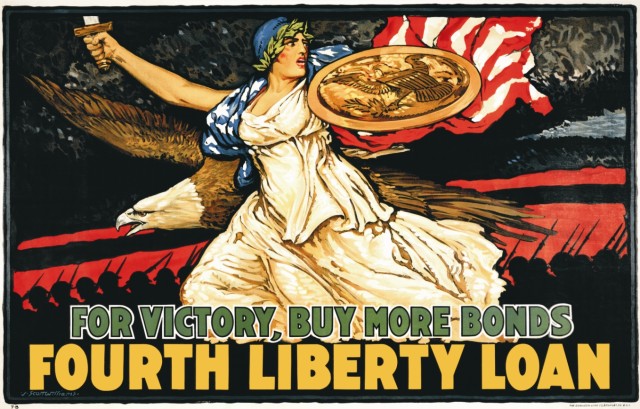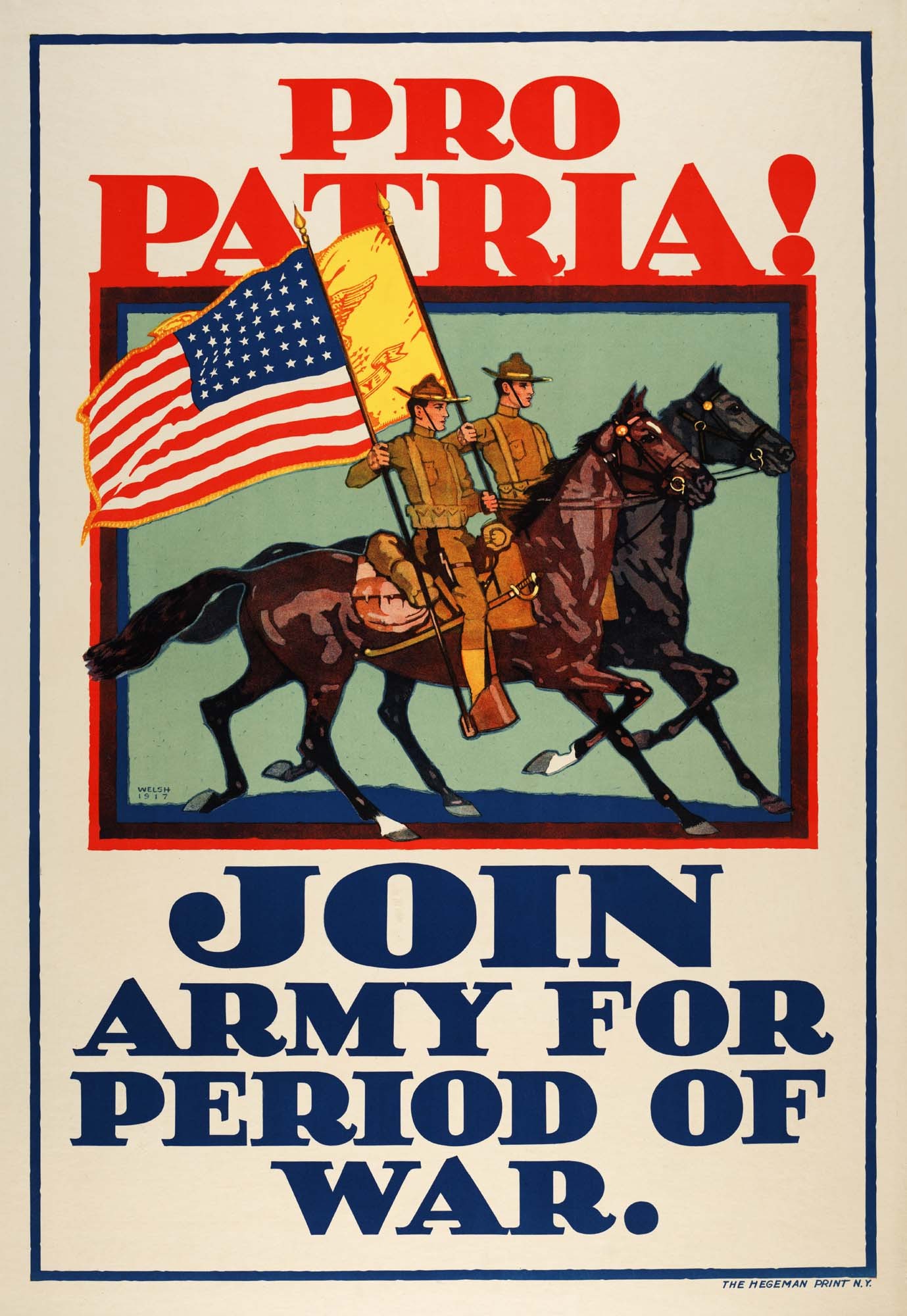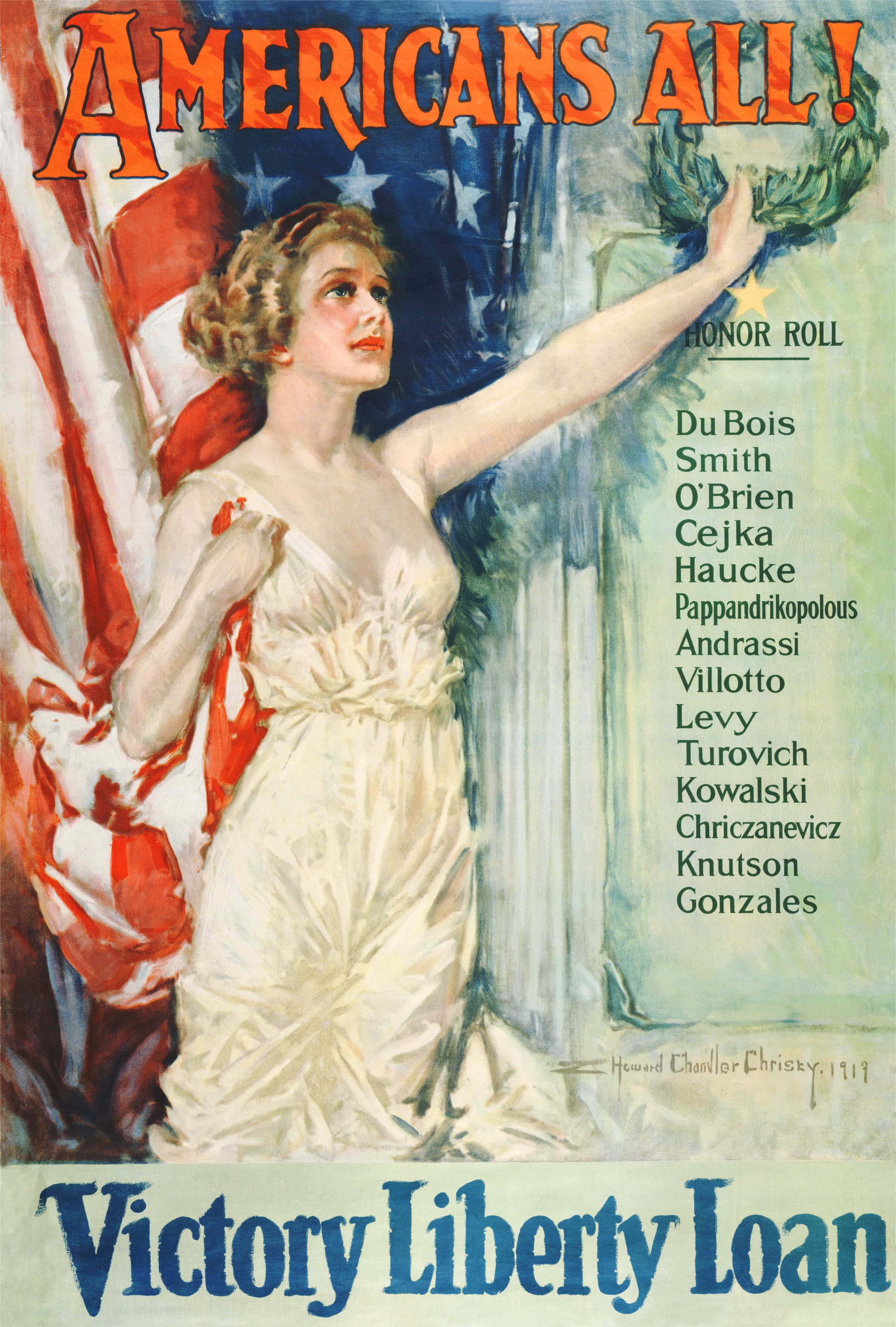Within weeks of the United States entering the First World War in 1917, President Woodrow Wilson knew that national support of the American people would be essential to winning the war.
The Society of Illustrators in New York City was tasked to find a way that artists might assist in the war effort. Under the leadership of Charles Dana Gibson, its members launched what became the Division of Pictorial Publicity. It was part of the Committee on Public Information, created by President Wilson and charged with designing posters that would encourage patriotism and sacrifice on the home front. More than three hundred of America's foremost designers, illustrators, painters, and cartoonists worked for the division. They had the responsibility to illustrate for the people the demands of the Great War and to place on every wall in America the call to patriotism and service by showing the stories of courage, suffering, heroism, and, most importantly, confidence for victory.
From the very start of the project, the Philadelphia Sketch Club, with some of the most famous artists in America as members, was well positioned to be at the center of the Division of Pictorial Publicity's war poster campaign. The Club joined in that great artistic effort of inspiring a nation to victory with many of the most successful posters. They were designed by illustrators and artists such as Howard Chandler Christy, Joseph Pennell, C.B. Falls, J.D. Sheridan, and H. Devitt Welsh, the Assistant Secretary of the Division of Pictorial Publicity. From April 1917 to the war's end in November, 1918, illustrators and artists submitted over seven hundred poster designs to various government agencies such as the United States Food Administration, the Liberty Loan Program, and Recruitment, as well as to private groups such as the Red Cross.
Posters made an important contribution to America's successful war effort in World War I. Their brilliant color and urgent demands projected a sense of patriotism: "the stuff that holds a nation together." Artists designed posters with national symbols and icons such as the American flag, the Statue of Liberty, Uncle Sam, and the girl next door to inspire the American nation to contribute to the call of liberty. Every American citizen was asked to stand up and take his or her patriotic place in the defense of our great country. To do less would be un-American. After the war, Congress tallied up the bill and found that two- thirds of the cost of the war was raised by poster bond drives.
ABOUT THIS STORY: Many of the sources presented in this article are among 400,000 books, 1.7 million photos and 12.5 million manuscripts available for study through the U.S. Army Military History Institute (MHI). The artifacts shown are among nearly 50,000 items of the Army Heritage Museum (AHM) collections. MHI and AHM are part of the: Army Heritage and Education Center, 950 Soldiers Drive, Carlisle, PA, 17013-5021.
Related Links:
Poster Exhibition "Inspiring A Nation."
A Working Bibliography of MHI Sources: Posters






Social Sharing